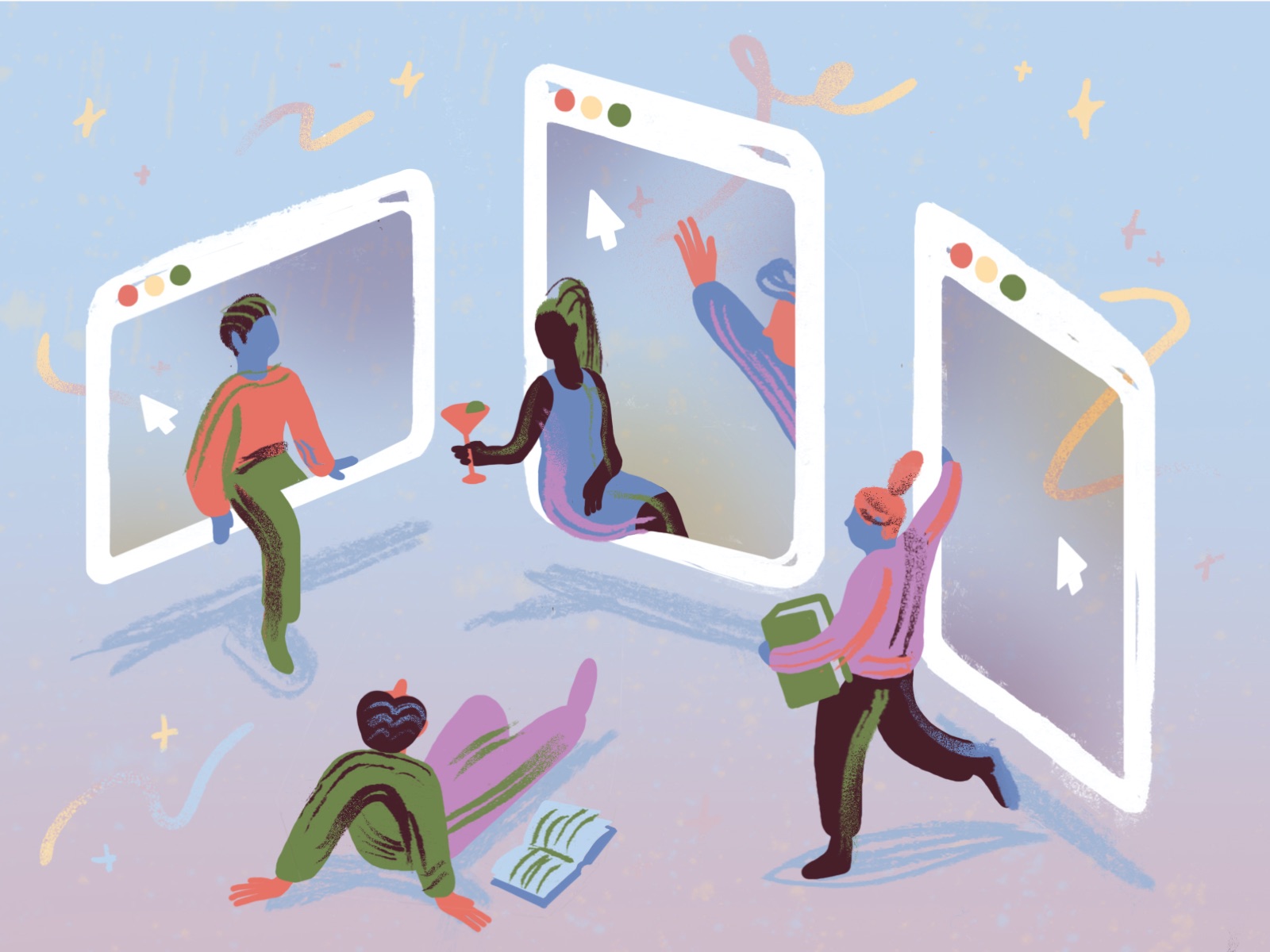Overcome the Challenges of Remote Learning by Focusing on Well-Being
How creating a culture of care can enhance the experience of teaching and learning at home
Insights from: Susan Whitmer, Higher Education Research Lead, Herman Miller
Interview by: Mindy Koschmann, Brand Content Editor, Herman Miller
This morning I was writing a draft of this article, working alongside my eight-year-old son. His task for the morning? Identifying parts of a platypus anatomy. Clearly, the once straight lines between student, parent, and teacher—and school and home—are now obscured.
Think of the thousands of students and instructors who are learning and teaching remotely for the first time. Some are parents with their own kids to homeschool. Some have been uprooted from their residence halls with no place to stay but a friend’s couch. Some are trying to keep up with their assignments while juggling jobs in healthcare, or other essential industries.
We’re all struggling right now. But we’re also resilient—a very human characteristic that my son reminded me of as he colored his platypus. Change can be challenging, but it can also invite optimism and opportunity. If we stay calm, and above all else, treat each other with empathy and grace, the future can still be sunny.
One place to start taking back some control from the chaos is by focusing our educational efforts on well-being. How can we enhance the total experience of teaching and learning at home by better caring for our physical, cognitive, and social well-being? Here are a few insights from our education expert, Susan Whitmer.
1. Focus on the Physical
In many homes, there often isn’t enough physical space for us to designate areas for learning, working, and living. Everything overlaps, and it’s hard for anyone to focus. Learning is also episodic. Students used to hours of structured classes are now learning in brief episodes—in between work, job hunting, or while helping their kids with their own studies. None of us have discovered a cure-all for the chaos. But we can start by focusing on the physical factors of teaching and learning at home.
Designate a spot in your home for studying or teaching. If possible, make sure it has plenty of natural light, which will reduce eyestrain, decrease headaches, regulate sleep cycles, and maybe even improve your mood. Also, try to change postures while working. Moving from sitting to standing—and taking frequent breaks to walk around—is good for your back and joints. And with better blood flow to your brain, you’ll find it easier to concentrate.
2. Lighten Your Cognitive Load
Remote learning is a significant cognitive challenge for students and instructors, for an entire rainbow of reasons. Most of us are inexperienced in learning and teaching outside the classroom, so it’s easy to become mentally exhausted and disengaged. And not everyone has access to online learning resources. These difficulties make it nearly impossible to develop any sort of shared learning experience between students and educators.
Our learning teams can overcome these challenges by staying focused on the goal: creating an accessible and engaging remote learning experience for all. To deliver on that mission, we need simple, standardized technology solutions that everyone from administrators to librarians to facilitators can easily embrace.
For students and instructors relying on videoconferencing to teach and learn, a few practical tips can make it easier for everyone on the video chat to stay cognitively engaged. To help people on a video call feel connected to each other, try to keep your computer camera at an angle where you can make eye contact with everyone. To do this, move to a standing posture at a countertop. This will help you engage more freely and collaboratively. Be sure to remove clutter from your camera’s background, too, so people don’t feel distracted while they are speaking with you. Eliminating moving objects also helps improve the video conference experience and reduce strain on Internet bandwidth.
3. Be Social
During this time of social distancing, we’re all wondering how to maintain relationships when we have fewer opportunities to build and maintain bonds. This is especially difficult for students and instructors. In a classroom setting, trust, understanding, and friendship happen naturally. But from a distance? Not so much.
As students, administrators, and instructors, we need to ground our remote learning teams in a culture of transparency and care. Focus on the immediate task of leading all instructors and students through these turbulent times. Meet instructors and students where they are in their remote teaching, learning, and work experiences, and treat everyone with empathy. Check in on each other regularly, whether it’s to discuss an education challenge or to just catch up with a friend.
We’re Here for You
We recognize that the current environment for teaching and learning is challenging. We’d like to help you turn those challenges into opportunities. Email us if you need help thinking through possible solutions. Our team is on hand to help. Together, we can experiment, innovate, and learn. By the time we come out on the other side, how education happens may look entirely different. More caring. More accessible. More rewarding for everyone.





